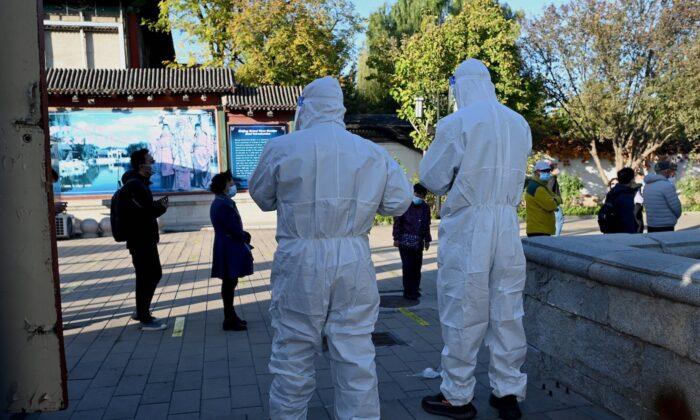Nearly 10,000 tourists are trapped in a tourist town on China’s northern border after strict government lockdowns were implemented in response to recent COVID-19 outbreaks.
Around 9,700 tourists are locked down in Dalaihob town of Inner Mongolia, according to a report from Chinese online news outlet The Paper on Oct. 26.
The provision of food and medical care is a major issue for the stuck tourists in the town of about 35,000 people.
The regime designated the town as a high-risk area, according to a Chinese state-run media portal News China on Oct. 21.
The first confirmed cases were a couple from Shanghai who tested positive for COVID-19 on Oct. 17. They were in the town as tourists and dined in a local restaurant on Oct. 12. Five of the staffers of the restaurant tested positive on Oct. 19.
Hospitality is one of Dalaihob’s major sources of revenue, despite the harsh desert climate resulting in an average of 14 sandstorms hitting the town every year.
September and October are the busiest parts of the tourist season, according to a local resident, who used the alias Hu Shao, who works at a local restaurant.
“Before the recent breakout of the pandemic, about 100,000 people came to see the Euphrates poplars,” Hu said of the town’s trees which are a key attraction, especially in October when their leaves turn yellow.
Hu told the Chinese-language edition of The Epoch Times on Oct. 27 that the town has been locked down since Oct. 25 and that residents and tourists are not allowed to go out.
“We can’t step out of the door,” Hu said. “We are driven inside once we go out.”
Anyone who tests positive for the CCP virus is taken away without any explanation. Criminal charges are attached to those who don’t obey, according to Hu.
“Many of the confirmed cases are people of senior ages,” Hu said.
A man using the pseudonym Yang, who is a local business owner, told The Epoch Times on Oct. 26 that there are over 60 hotels and hostels in the town, which are open for tourists from late September to late October.
“All the shops and scenic spots were closed on Oct. 18,” Yang said.
He said that about 60 percent of the tourists stuck in the town are seniors and that they urgently need daily necessities, medicines, and medical supplies.
The local authorities announced an increase of 35 positive cases from 7 am Oct. 25 to 8 am Oct. 26. Due to the CCP’s censorship, it is believed that the actual cases can be more than the official data.
This new wave of the pandemic has spread to 11 provinces and Beijing, according to China’s news portal The Paper on Oct. 26.




